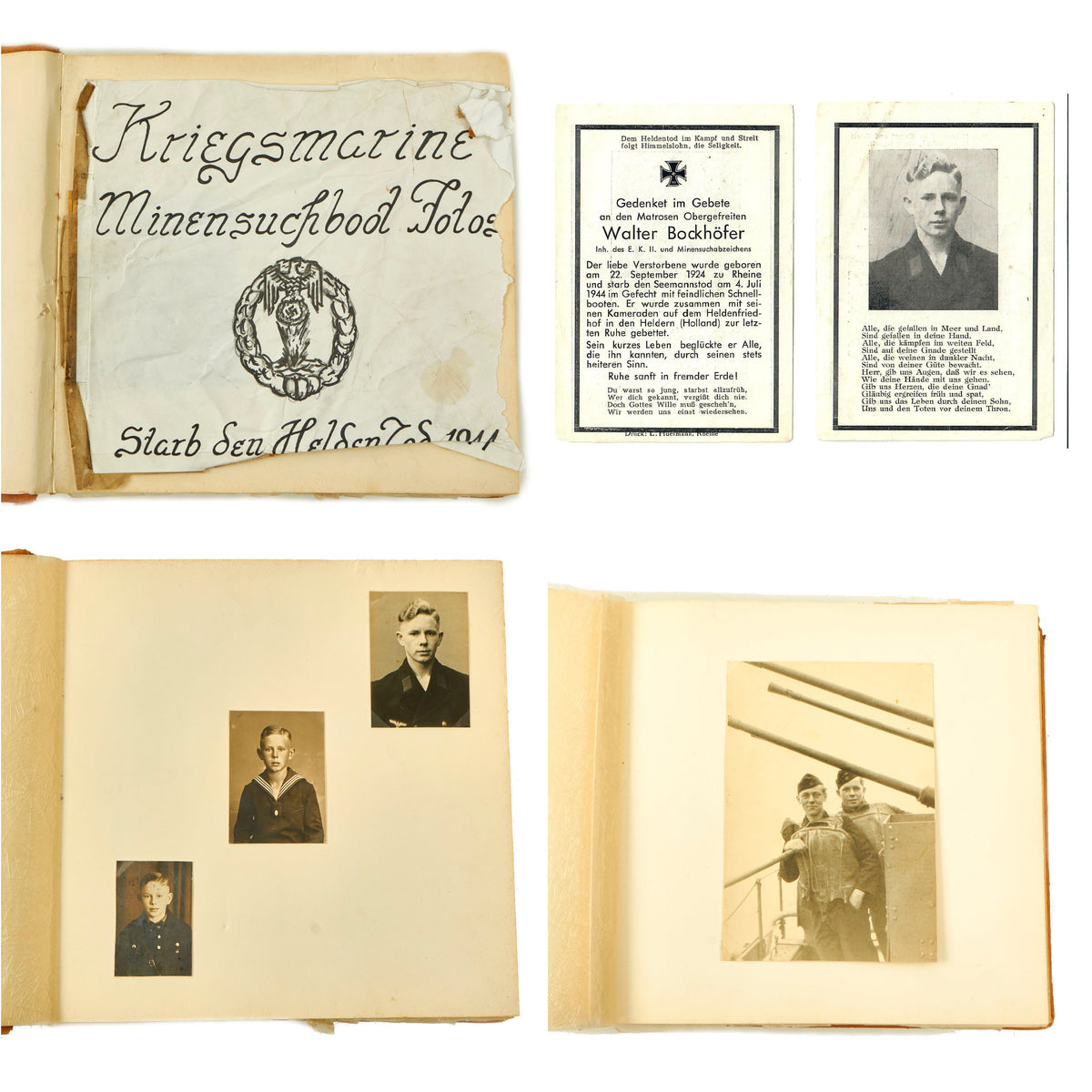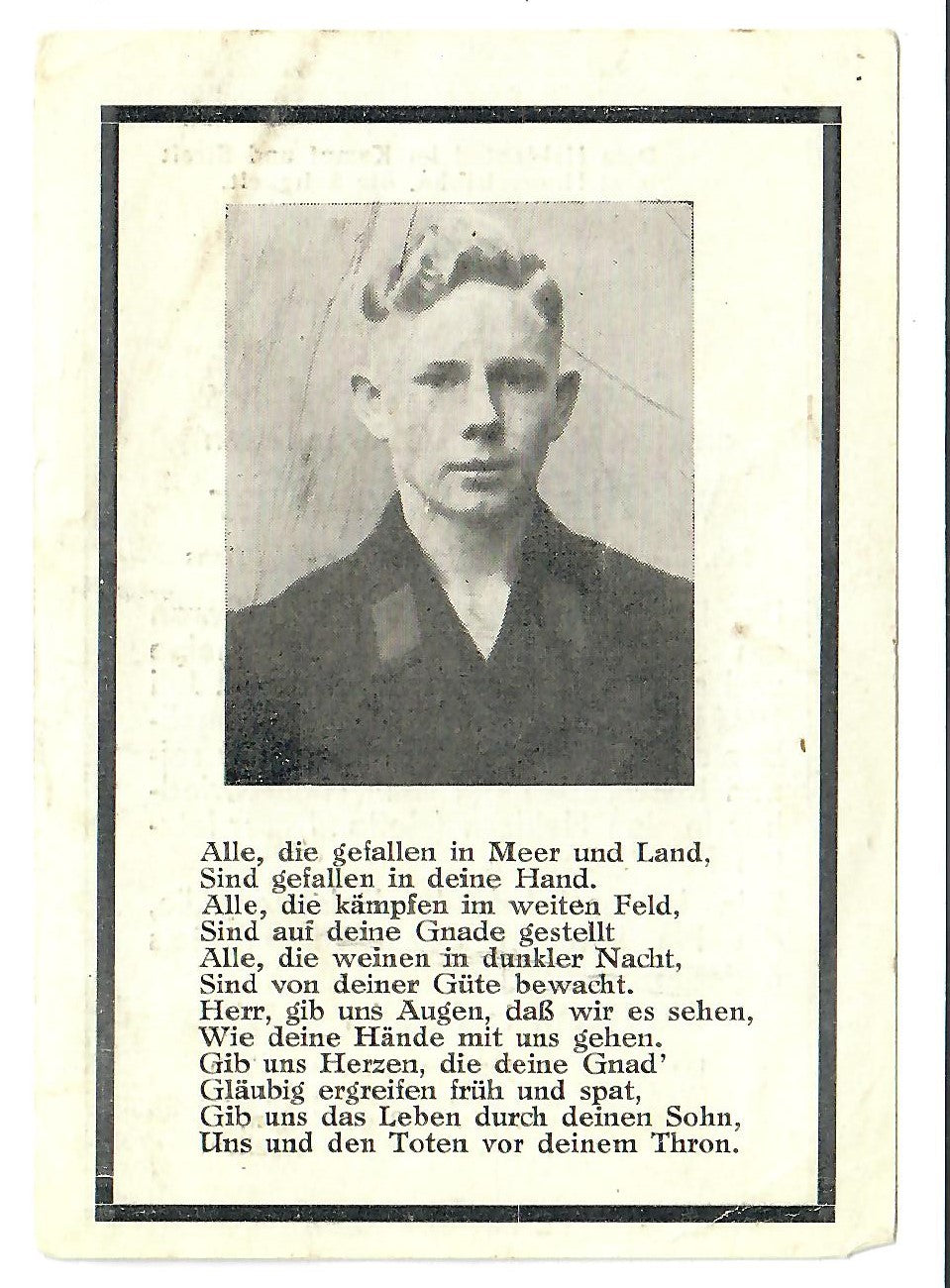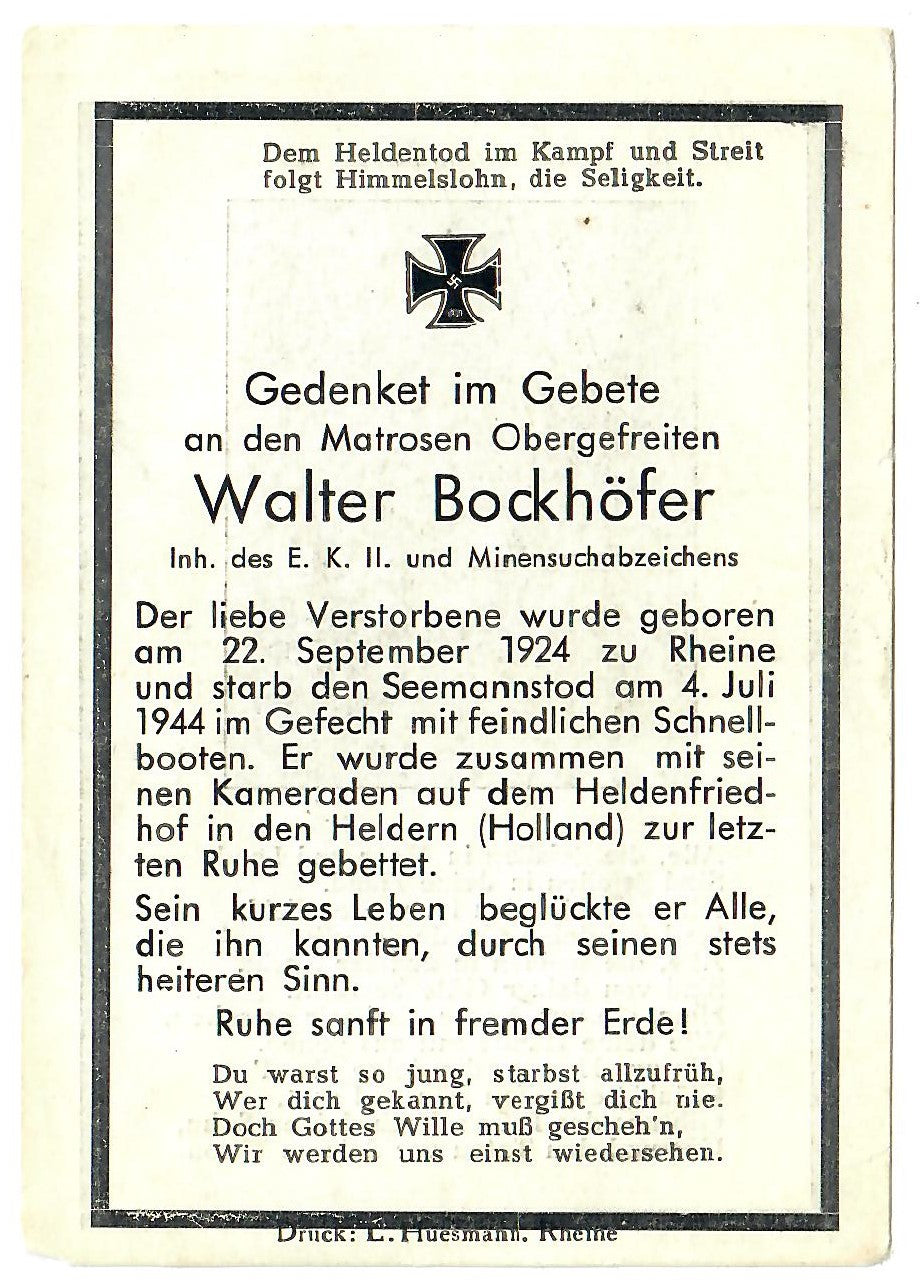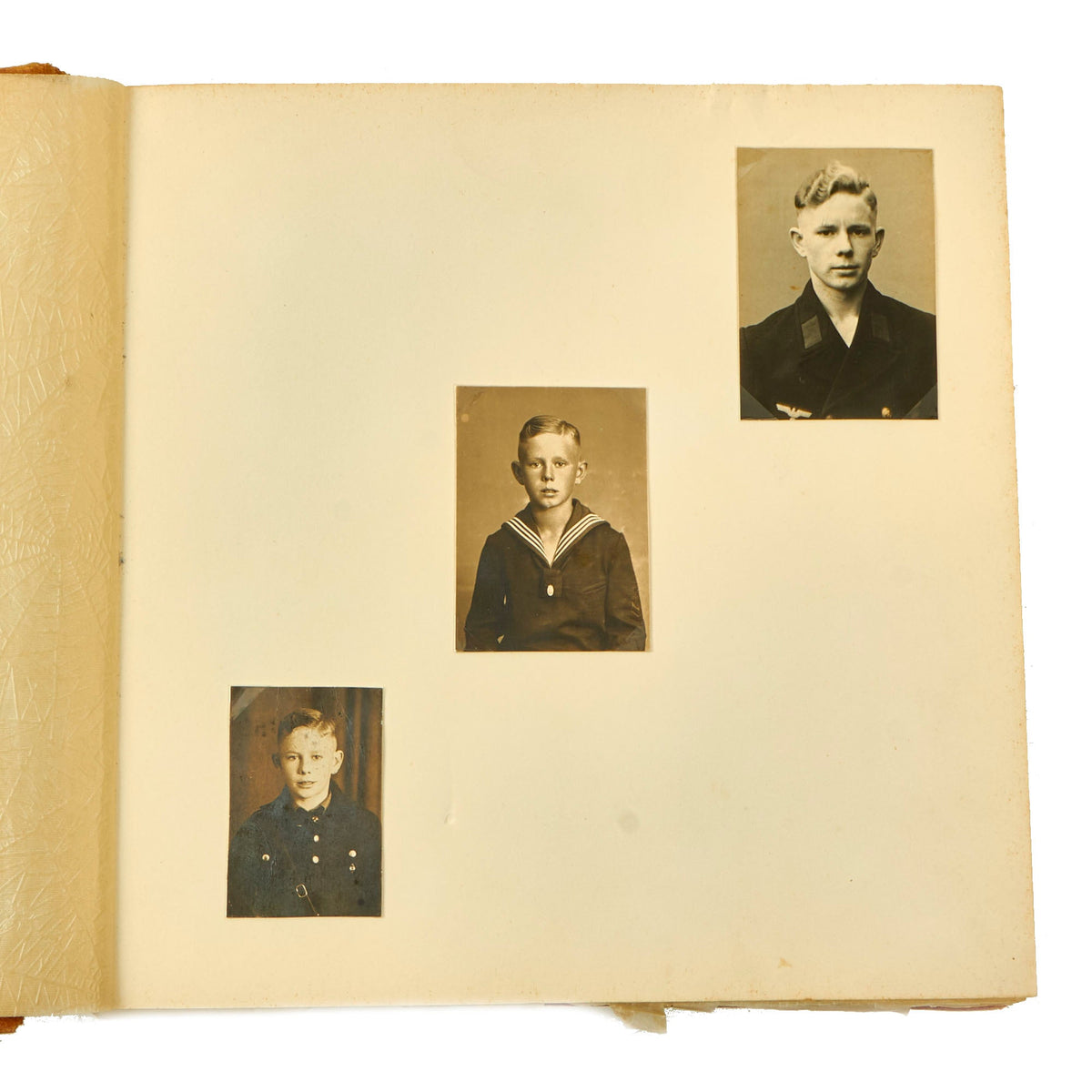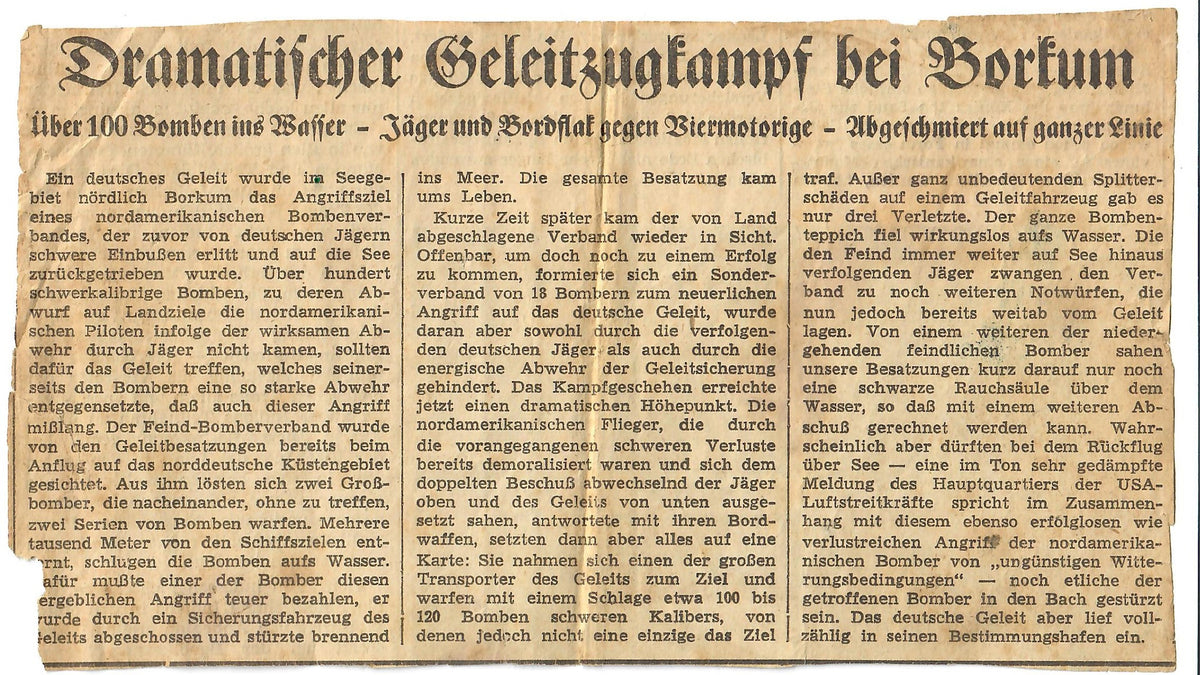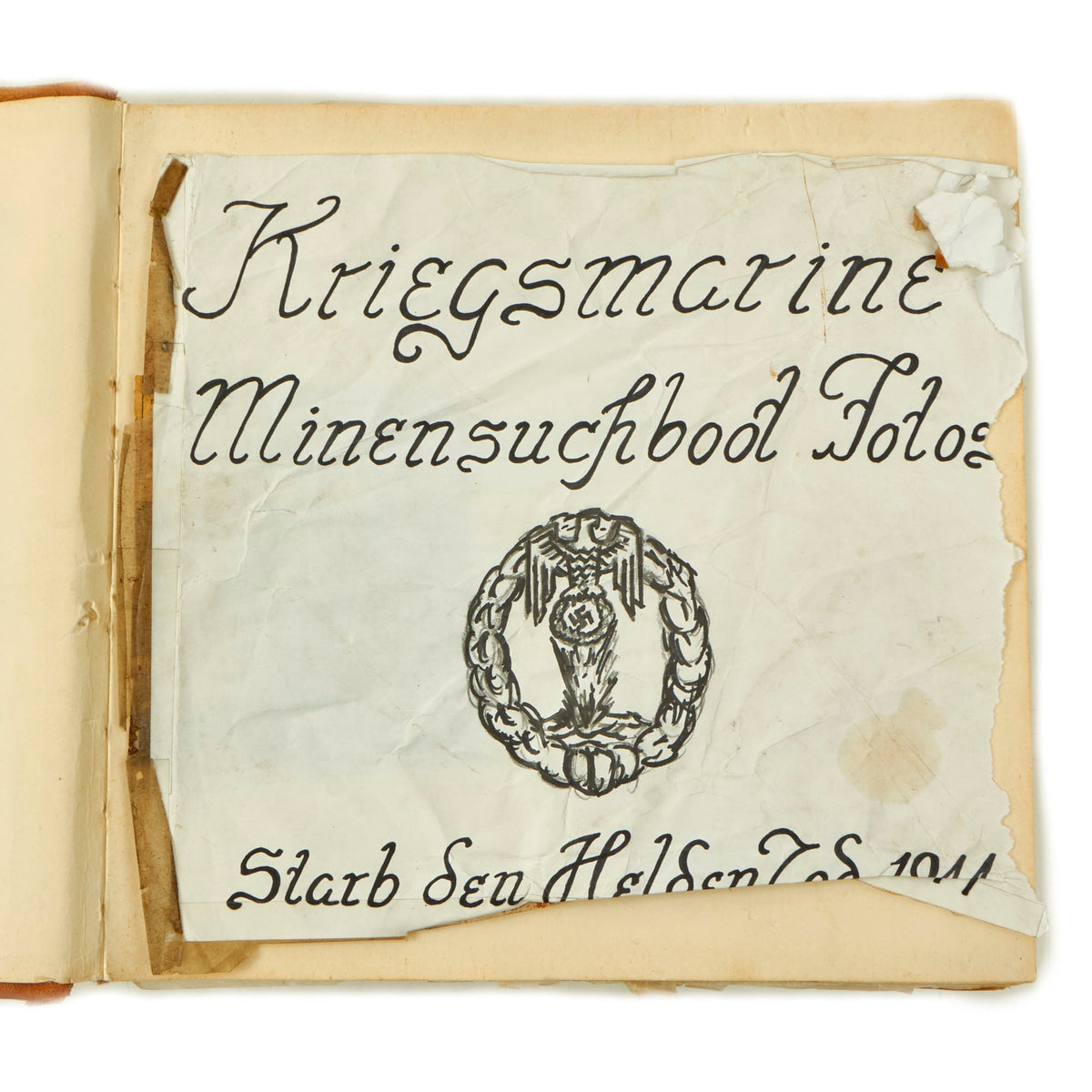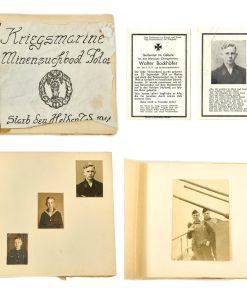Original German WWII Kriegsmarine Minesweeper Service Personal Photo Album of Walter Bockhöfer with Death Card – KIA July 1944 Original Items
$ 595,00 $ 178,50
Original Item: One-of-a-kind-set. Here we have a very interesting personal photo album of a Kriegsmarine sailor, which possibly looks to be a “Funeral Album”, displayed at the services following his death. The album is definitely in somewhat worn condition, with the front cover leatherette covering completely missing, as well as the covering over the spine. There is however a stylized pencil and marker drawing, which may have been taped over the cover at one point, which reads:
Kriegsmarine
Minensuchboot Fotos
(Minesweeper Badge)
Starb den HeldenTod 1944
This translates to “Kriegsmarine minesweeper photos – Died the hero’s death in 1944”, and included in the pages of the album is the “death card” of Walter Bockhöfer, as well as what we believe is an article related to his service. The death card indicates he had received the Iron Cross Second Class EKII and the Mine Sweeper Badge. Born 22. September 1924 and Killed in Action 4. Juli 1944, Bockhöfer was only 19 at the time. The card indicates that the ship he was on was in combat with enemy speedboats at the time, though there is not an indication of the name of the minesweeper he was on.
The album is 37 pages long, though only the first 20 pages look to have been used, and now contain 72 photos. These start out with photos of Bockhöfer as a young child, and then possibly as a member of the HJ Marine, before showing pictures of him as a sailor. There are many photographs showing him in service on a ship, as well as pictures at sea. We can even see a Kriegsmarine Reichskriegsflagge (Battle Flag) in one of the pictures. The album measures approximately 10 1/2″ x 10 1/2″ x 13/4″, and really is filled with some great shots.
Historical records like this album have become priceless time capsules that provide an incomparable level of insight into the individual experience of the Second World War, now that almost eighty years have passed.
The Kriegsmarine was the navy of NSDAP Germany from 1935 to 1945. It superseded the Imperial German Navy of the German Empire (1871–1918) and the inter-war Reichsmarine (1919–1935) of the Weimar Republic. The Kriegsmarine was one of three official branches, along with the Heer and the Luftwaffe, of the Wehrmacht, the German armed forces from 1935 to 1945.
In violation of the Treaty of Versailles, the Kriegsmarine grew rapidly during German naval rearmament in the 1930s. The 1919 treaty had limited the size of the German navy and prohibited the building of submarines.
Kriegsmarine ships were deployed to the waters around Spain during the Spanish Civil War (1936–1939) under the guise of enforcing non-intervention, but in reality supported the Nationalists against the Spanish Republicans.
In January 1939, Plan Z, a massive ship-building program, was ordered, calling for surface naval parity with the British Royal Navy by 1944. When World War II broke out in September 1939, Plan Z was shelved in favor of a crash building program for submarines (U-boats) instead of capital surface warships, and land and air forces were given priority of strategic resources.
The Commander-in-Chief of the Kriegsmarine (as for all branches of armed forces during the period of absolute NSDAP power) was AH, who exercised his authority through the Oberkommando der Marine (“High Command of the Navy”).
The Kriegsmarine’s most significant ships were the U-boats, most of which were constructed after Plan Z was abandoned at the beginning of World War II. Wolfpacks were rapidly assembled groups of submarines which attacked British convoys during the first half of the Battle of the Atlantic but this tactic was largely abandoned by May 1943 when U-boat losses mounted. Along with the U-boats, surface commerce raiders (including auxiliary cruisers) were used to disrupt Allied shipping in the early years of the war, the most famous of these being the heavy cruisers Admiral Graf Spee and Admiral Scheer and the battleship Bismarck. However, the adoption of convoy escorts, especially in the Atlantic, greatly reduced the effectiveness of surface commerce raiders against convoys.
Following the end of World War II in 1945, the Kriegsmarine’s remaining ships were divided up among the Allied powers and were used for various purposes including minesweeping. Some were loaded with superfluous chemical weapons and scuttled.
Fast Shipping with Professional Packaging
Thanks to our longstanding association with UPS FedEx DHL, and other major international carriers, we are able to provide a range of shipping options. Our warehouse staff is expertly trained and will wrap your products according to our exact and precise specifications. Prior to shipping, your goods will be thoroughly examined and securely secured. We ship to thousands clients each day across multiple countries. This shows how we're dedicated to be the largest retailer on the internet. Warehouses and distribution centres can be located throughout Europe as well as the USA.
Note: Orders with more than one item will be assigned a processing date depending on the item.
Before shipping before shipping, we'll conduct a thorough inspection of the items you have ordered. Today, the majority of orders will be delivered within 48 hours. The delivery time will be between 3-7 days.
Returns
The stock is dynamic and we cannot completely manage it because multiple stakeholders are involved, including our factory and warehouse. So the actual stock may alter at any time. It's possible that you may not receive your order once the order has been made.
Our policy is valid for a period of 30 days. If you don't receive the product within 30 days, we are not able to issue a refund or an exchange.
You can only return an item if it is unused and in the same state as the day you received it. You must have the item in its original packaging.
Related products
Uncategorized
Uncategorized
Uncategorized
Uncategorized
Australian WWII Owen MK1 Machine Carbine SMG Custom Fabricated Replica with Sling Original Items
Uncategorized
Uncategorized
Uncategorized
Uncategorized
Uncategorized
Uncategorized
Uncategorized
Uncategorized
Armoured Fighting Vehicles of the World: AFVs of World War One (Hardcover Book) New Made Items
Uncategorized
Uncategorized
Angolan Rebel 1970s era 60mm Inert Display Mortar from Angolan Civil War Original Items
Uncategorized
Uncategorized
Uncategorized
Uncategorized
Uncategorized
Uncategorized
